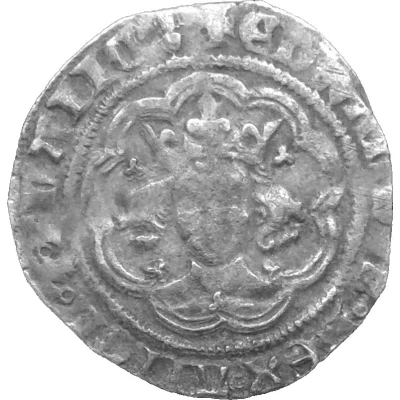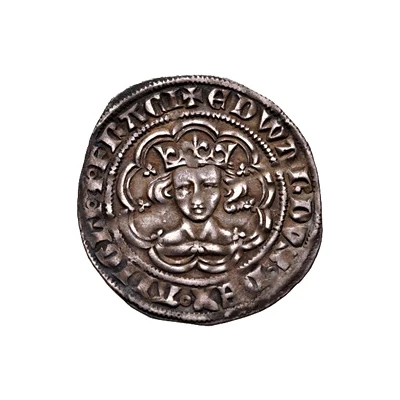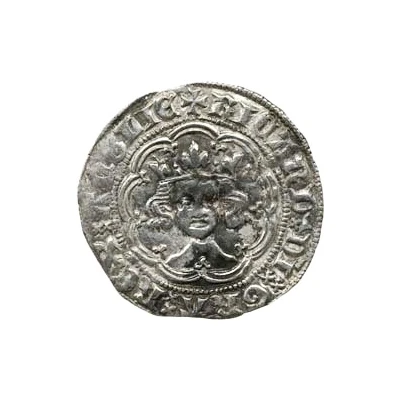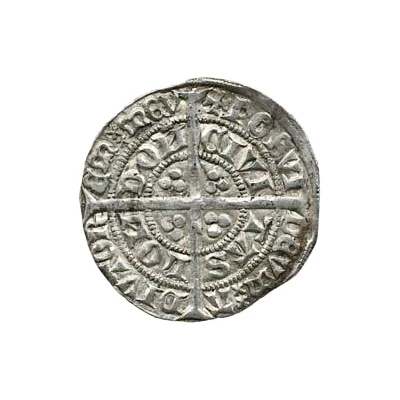


© Monéphil (CC BY-NC)
½ Groat - Edward III Post-treaty period ND
| Silver | 2.14 g | 22 mm |
| Issuer | England (United Kingdom, British Overseas Territories and Crown Dependencies) |
|---|---|
| King | Edward III (1327-1377) |
| Type | Standard circulation coin |
| Years | 1369-1377 |
| Value | ½ Groat (1⁄120) |
| Currency | Pound sterling (1158-1970) |
| Composition | Silver |
| Weight | 2.14 g |
| Diameter | 22 mm |
| Shape | Round (irregular) |
| Technique | Hammered |
| Orientation | Coin alignment ↑↓ |
| Demonetized | Yes |
| Updated | 2024-10-09 |
| Numista | N#50521 |
|---|---|
| Rarity index | 83% |
Reverse
Long cross pattée with three pellets in each quarter, two outer circles of legend around
Script: Latin (uncial)
Lettering:
+POS - VI DEV - ADIVT - OREM
CIVI - TAS - LON - DON
Lettering (regular font):
+POS - VI DEV - ADIVT - OREM
CIVI - TAS - LON - DON
Translation:
I have made God [my] helper
City of London
Comment
House of Plantagenet (1154-1399), Edward III (1327-77), Post-treaty period (1369-77).Interesting fact
The ½ Groat coin was minted during the post-treaty period of King Edward III's reign, specifically between 1369 and 1377. During this time, England was facing economic challenges, including a severe shortage of coinage. To address this issue, the king introduced a new coinage system, which included the ½ Groat coin, that was made of silver and weighed 2.14 grams. This coin was an important addition to the currency system of England at that time and played a significant role in facilitating trade and commerce.



